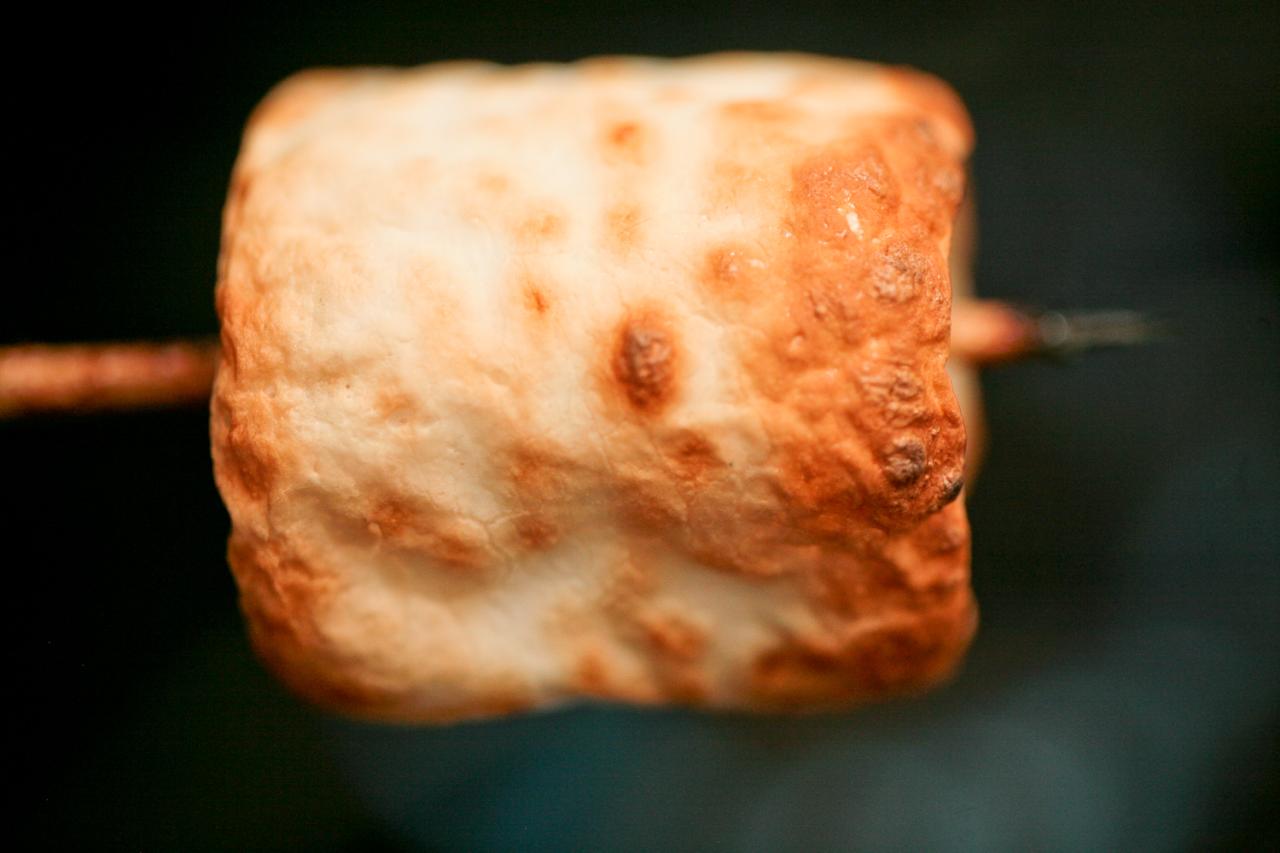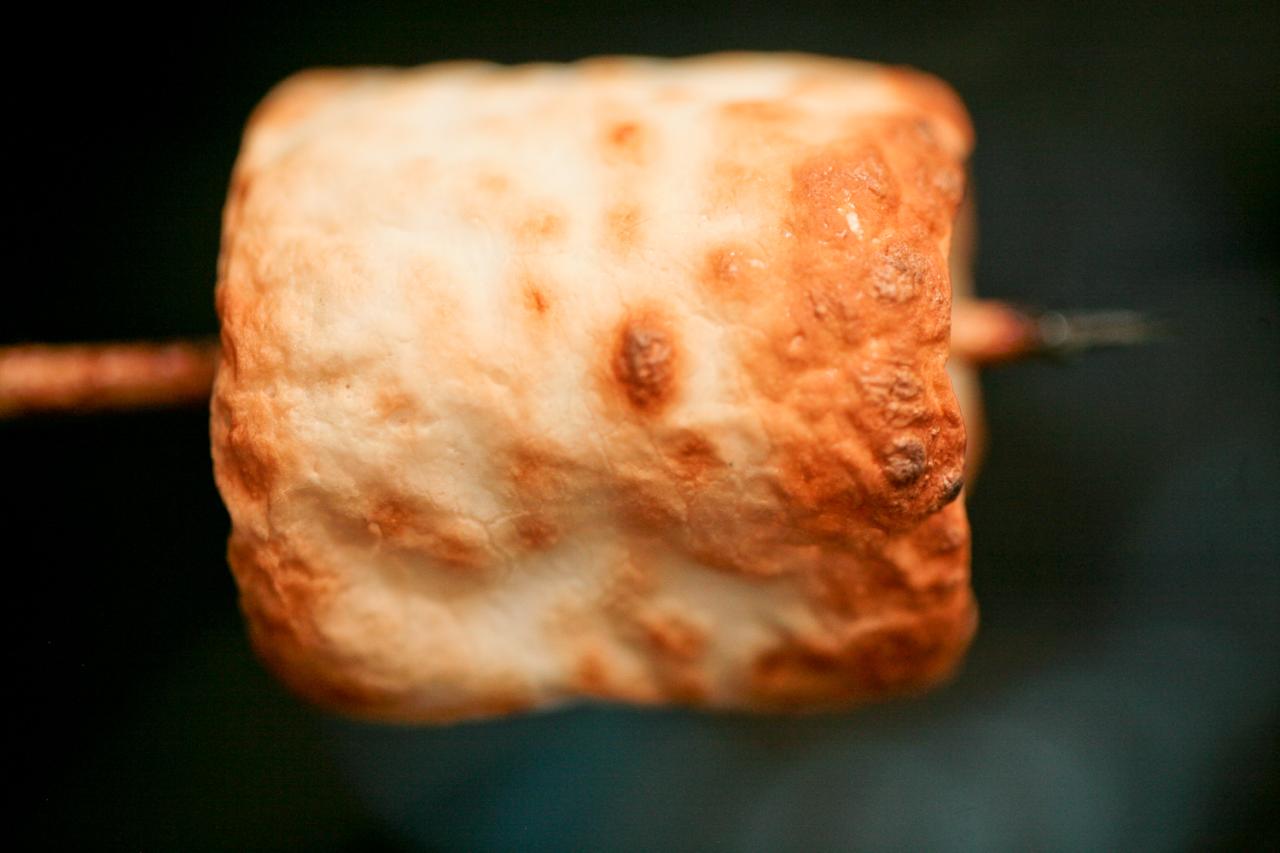As the texture of a roasted marshmallow takes center stage, this opening passage beckons readers into a world crafted with good knowledge, ensuring a reading experience that is both absorbing and distinctly original. Delving into the sensory characteristics, factors influencing texture, and comparisons to other foods, this exploration unveils the intricate tapestry of textures that define this beloved treat.
Sensory Characteristics: Texture Of A Roasted Marshmallow
When you roast a marshmallow over a campfire, the heat causes the sugars on the outside to caramelize, creating a crispy exterior. The inside of the marshmallow, however, remains soft and fluffy. The combination of these two textures creates a unique and irresistible treat.
Crispy Exterior
The crispy exterior of a roasted marshmallow is caused by the Maillard reaction, which is a chemical reaction that occurs between sugars and amino acids when heated. This reaction produces a variety of compounds, including melanoidins, which are responsible for the brown color and caramel-like flavor of the marshmallow’s exterior.
The crispy exterior also provides a satisfying crunch when you bite into it.
Fluffy and Airy Interior
The fluffy and airy interior of a roasted marshmallow is due to the presence of air bubbles. When the marshmallow is heated, the water inside the marshmallow evaporates and expands, creating these air bubbles. The air bubbles make the marshmallow light and fluffy, and they also help to insulate the interior of the marshmallow, keeping it soft and gooey.
Chewy and Gooey Interior
The chewy and gooey interior of a roasted marshmallow is caused by the presence of gelatin. Gelatin is a protein that is derived from collagen, which is found in the skin and bones of animals. When gelatin is heated, it dissolves and forms a gel.
This gel gives the marshmallow its characteristic chewy and gooey texture.
Factors Influencing Texture
The texture of a roasted marshmallow is influenced by several factors, including roasting time, size, and the type of sugar used.Roasting time plays a crucial role in determining the texture of a marshmallow. A shorter roasting time results in a marshmallow with a softer, chewier texture, while a longer roasting time produces a marshmallow with a crispier, caramelized exterior and a gooey, melted interior.The size of the marshmallow also affects its texture.
Smaller marshmallows tend to roast more evenly and quickly, resulting in a uniform texture throughout. Larger marshmallows, on the other hand, may have a softer, unroasted center while the exterior is browned and crispy.The type of sugar used in the marshmallow can also influence its texture.
Marshmallows made with granulated sugar tend to have a crispier exterior and a chewier interior, while marshmallows made with corn syrup or honey have a softer, more gooey texture.
Roasting Time
The ideal roasting time for a marshmallow depends on the desired texture. For a soft, chewy marshmallow, roast for about 30 seconds per side, or until the marshmallow is slightly golden brown and puffy. For a marshmallow with a crispy exterior and a gooey interior, roast for about 1 minute per side, or until the marshmallow is golden brown and slightly charred.
Size
Smaller marshmallows, such as mini marshmallows, roast more quickly and evenly than larger marshmallows. This is because the heat can penetrate the marshmallow more easily, resulting in a uniform texture throughout. Larger marshmallows may have a softer, unroasted center while the exterior is browned and crispy.
Type of Sugar
Marshmallows made with granulated sugar tend to have a crispier exterior and a chewier interior. This is because granulated sugar caramelizes more easily than other types of sugar, creating a crispy crust. Marshmallows made with corn syrup or honey have a softer, more gooey texture.
This is because corn syrup and honey do not caramelize as easily as granulated sugar, resulting in a marshmallow that is soft and pliable.
Comparison to Other Foods

The texture of a roasted marshmallow is unique, but it shares some similarities and differences with other foods.
Toasted Marshmallow
A toasted marshmallow has a crispy, slightly charred exterior and a soft, gooey interior. The texture is similar to that of a roasted marshmallow, but the toasted marshmallow is typically less chewy and has a more pronounced smoky flavor.
S’more
A s’more is a classic campfire treat that combines a roasted marshmallow, a graham cracker, and a piece of chocolate. The texture of a s’more is a combination of the textures of the individual components. The roasted marshmallow provides a soft, gooey center, while the graham cracker adds a crispy, crunchy texture.
The chocolate adds a rich, velvety texture that complements the other two components.
Complementary Foods, Texture of a roasted marshmallow
The texture of a roasted marshmallow complements a variety of other foods. It can be used as a topping for ice cream, fruit, or yogurt. It can also be used as a filling for sandwiches or pastries. The roasted marshmallow’s soft, gooey texture adds a touch of sweetness and richness to any dish.
Ultimate Conclusion
In the realm of culinary delights, the texture of a roasted marshmallow stands as a testament to the transformative power of heat. From the crispy exterior to the fluffy interior and the chewy, gooey center, each element contributes to a symphony of textures that tantalizes the taste buds.
Understanding the factors that influence this textural masterpiece empowers us to craft marshmallows that are perfectly roasted, delivering an unforgettable sensory experience with every bite.
FAQ Compilation
What is the secret to achieving the perfect crispy exterior on a roasted marshmallow?
The key lies in finding the optimal roasting time. Hold the marshmallow over the heat source until the exterior is golden brown and slightly charred, creating a delectable contrast to the soft and fluffy interior.
How does the size of the marshmallow affect its texture?
Larger marshmallows take longer to roast, resulting in a thicker, crispier exterior and a more pronounced gooey center. Smaller marshmallows, on the other hand, roast more quickly, yielding a thinner, more delicate crust and a less pronounced gooey texture.
What is the role of sugar in determining the texture of a roasted marshmallow?
The type of sugar used influences the marshmallow’s ability to caramelize. Sugars with a higher melting point, such as granulated sugar, create a crispier exterior, while sugars with a lower melting point, such as brown sugar, result in a chewier, gooier texture.

